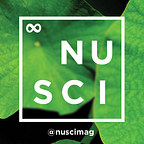The (Not So Easy) Recipe for Life
By Cara Pesciotta, Physics, 2022
Of the estimated 200 billion planets in our universe, Earth is the only one known to sustain life. This is an incredibly small statistic, indicating that our planet has a specific amalgamation of characteristics that make it ideal for life to form and survive. With that being said, we might begin to think about what these characteristics are. What makes Earth so special?
The leading idea is that our planet is host to large amounts of water — almost two thirds of Earth’s surface is covered by water. This is where life on Earth began and where it continues to flourish. Since no other planets in our Solar System contain the same wealth of hydrogen dioxide, let alone in liquid form, it makes sense why none of them sustain life. This suggests that the abundance of water is what makes Earth so special. However, one question still remains: why Earth?
Of the estimated 200 billion planets in our universe, Earth is the only one known to sustain life.
The answer lies in the habitable zone, or the sweet spot where a planet’s temperature is conducive to liquid water’s existence. If a planet orbits too close to the Sun, water will evaporate. If the planet is too far, it will freeze. Earth and Mars happen to fall directly in the habitable zone, with Mercury and Venus too close to the Sun and Jupiter, Saturn, Uranus, and Neptune too far.
When looking for life on other planets, determining where habitable zones are can get tricky. First, there is a different threshold for each solar system due to the temperature of its star. Typically, a solar system is made up of planets and other objects orbiting a central star, ranging in age, size, and temperature depending on how it was formed. These properties affect where a star’s habitable zone lies. A star hotter than the Sun, for example, would have a habitable zone that begins farther away. A second complication is that the temperature of a star changes through the course of its lifetime, causing the habitable zone to move with time. This poses challenges when identifying habitable exoplanets, or planets outside our Solar System, since one close to forming life may become unviable or one that was ruled out may later become significant. Third, a planet’s entire orbit must be taken into account when mapping the habitable zone. Of the 4,118 discovered exoplanets, 129 have their entire orbit in the zone, while 493 only have partial orbit in the zone. This could create drastic weather patterns, varying from extreme temperatures to harsh natural disasters, affecting any life that may have formed.
Of the 4,118 discovered exoplanets, 129 have their entire orbit in the habitable zone, while 493 only have partial orbit in the zone.
Let’s say a planet’s orbit was found to be completely inside the habitable zone for a long time to come– it is probably still not habitable. There are other planetary characteristics like surface features and atmosphere that play a big role in habitability. A rocky surface like Earth’s is conducive to holding liquid water, allowing it to easily pool so life can form. This would also help ensure that the atmosphere is not too gaseous, leading to increased pressure and hostile environments for forming molecules. Identifying these properties is not clear cut– scientists use a planet’s radius and the amount of light blocked from a passing star to get a rough estimate, but it is typically hard to discern large gaseous planets from small rocky ones since a similar amount of light is blocked in both cases. This distinction can mark the difference between Earth-like and Neptune-like exoplanets, where only Earth-like exoplanets are habitable.
Let’s say a planet’s orbit was found to be completely inside the habitable zone for a long time to come– it is probably still not habitable.
Habitable zones and planetary properties act as a great jumping point for scientists’ quest to find liquid water on other planets, which could signify a potential habitat for life forms. In 2015, NASA found strong evidence for the presence of liquid water on Mars, a rocky planet in the Sun’s habitable zone long thought to only have ice. In September 2019, scientists announced the discovery of water vapor on the surface of the exoplanet K2–18b, which is in its respective habitable zone, but its planetary surface is yet to be determined. Current analysis leads to K2–18b being a large gaseous planet, not exactly conducive to pooling water.
Nonetheless, Mars and K2–18b are important in continuing to understand what “habitable” really means. Scientists are beginning to push those boundaries, considering bodies like Saturn’s icy stars as candidates for liquid water despite not being in the habitable zone. The definition of this term is evolving as other factors come into play, just as the answer to “Why Earth?” is becoming more and more elaborate.
DOI: 10.1038/s41550–019–0878–9
